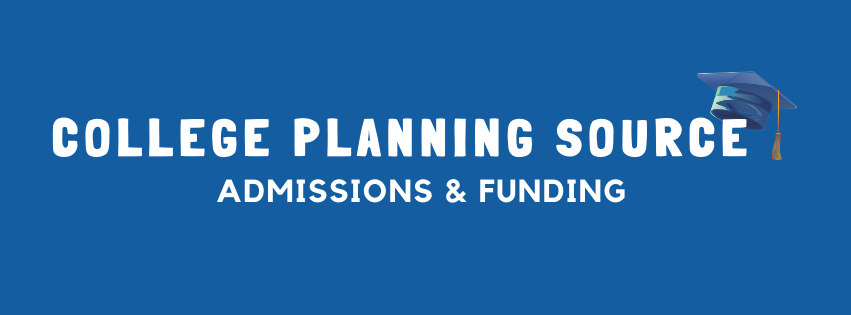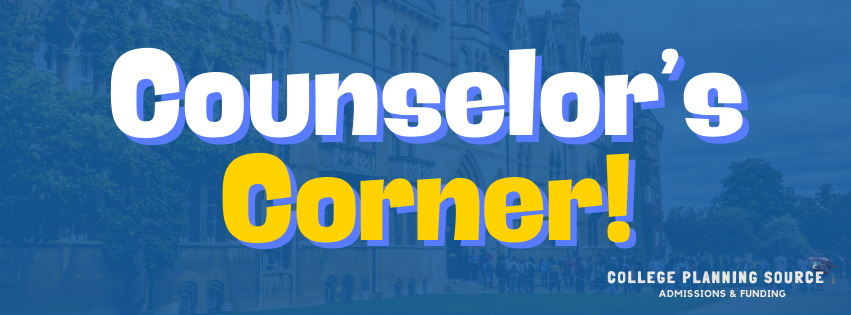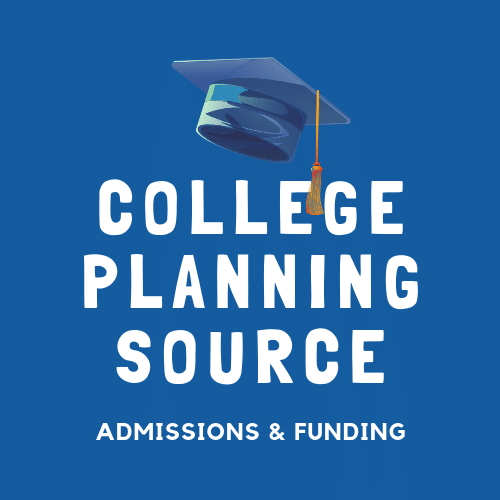-
College Applications
- Admissions Interviews
- Application Calendar
- Brag Packets
- Common App Personal Statement Essay
- Common Application
- CSU Application
- Essay Brainstorming
- Institutional Applications
- Mid-Year Reports
- Optional Supplements/ Portfolios
- RD/EA/REA/ED Deadlines
- Sending SAT / ACT / AP / IB Scores
- Supplemental Essays
- UC Application
- UC Personal Insight Questions
- Letters of Recommendation
- Sending Transcripts
- Honors Programs at Colleges
- How to Create a Balanced College List
- Securing Letters of Recommendation for College Applications
- The Pre-College Application(s) Checklist
- Understanding Early Action, Early Decision, and Restrictive Early Action: Making the Right Choice
- How to Successfully Complete Your Self-Reported Academic Record (SRAR)
- 13 Ways We Can Detect AI in College Essays
- 8 ways to approach leveraging AI in the essay writing process while keeping it authentic to you
- Common words used in AI-generated college admission essays
- Show all articles (11) Collapse Articles
Navigating the Common Application: A Comprehensive Guide for Prospective College Students
As you embark on the exciting journey towards college education, the Common Application (often referred to as the Common App) stands as a pivotal tool in your application process. This streamlined, online application system allows you to apply to multiple colleges and universities across the United States and even some international institutions with a single application. Understanding each part of the Common Application is crucial for presenting a compelling and comprehensive profile to your chosen institutions. Let’s break down the key components:
1. Profile Section
This section is essentially a snapshot of your basic information. It includes your name, address, demographics, and details about your family. While straightforward, it’s important to ensure accuracy, as this information lays the groundwork for your application.
2. Education Section
Here, you’ll detail your high school education, including the name and address of your school, your graduation date, and any college credits you may have earned through advanced placement (AP) courses, dual enrollment, or other programs. It’s also the section where you report your class rank and GPA, if applicable.
3. Testing Section
The Testing section is where you’ll report your standardized test scores, such as the SAT, ACT, SAT Subject Tests, AP, IB, and TOEFL or IELTS for non-native English speakers. It’s worth noting that many colleges have adopted test-optional policies, so check with each institution’s requirements before submitting your scores.
4. Activities Section
This part of the application allows you to showcase your extracurricular involvement outside the classroom. It includes clubs, sports, volunteering, work experience, and any other activities that have been a significant part of your high school career. The key here is to highlight leadership roles, commitment, and the impact of your involvement.
5. Writing Section
The heart and soul of your application, the Writing section includes your personal statement and supplementary essays required by certain colleges. The personal statement is your chance to tell your story, share your values, and give admissions officers insight into who you are beyond your grades and test scores. Supplementary essays, on the other hand, are specific to each college and allow you to express why you’re a good fit for that institution.
6. Letters of Recommendation
Most colleges require one to three letters of recommendation as part of your application. These should come from teachers, counselors, or mentors who know you well and can speak to your abilities, character, and potential. Make sure to ask for these letters well in advance of application deadlines.
7. College-Specific Questions
Many colleges and universities use the Common App to ask specific questions that are unique to their institution. These can range from academic interests to residential life preferences. Paying close attention to these questions and answering them thoughtfully can demonstrate your genuine interest in the school.
8. Financial Aid Resources
Though not a part of the Common Application itself, it’s important to mention the financial aid process. The Common App provides resources and links to the Free Application for Federal Student Aid (FAFSA) and the College Scholarship Service (CSS) Profile, which are key components in securing financial aid.
Tips for Success:
- Start Early: Give yourself plenty of time to gather information, write essays, and request letters of recommendation.
- Be Thorough: Review each section carefully to ensure accuracy and completeness.
- Show Your Best Self: Use the activities and writing sections to highlight your achievements, character, and how you’ve grown through your experiences.
In summary, the Common Application is a powerful tool that simplifies the college application process but requires careful attention to detail and thoughtful reflection. By understanding and meticulously preparing each section, you’ll be well on your way to presenting a compelling application to your chosen colleges and universities. Good luck!
Ready to get some guidance? Schedule a College Planning Assessment today!
Want college planning guidance delivered to you?
Sign up for our Counselor’s Corner Newsletter to receive helpful information and tips for
both parents and students on navigating the college admissions journey.




